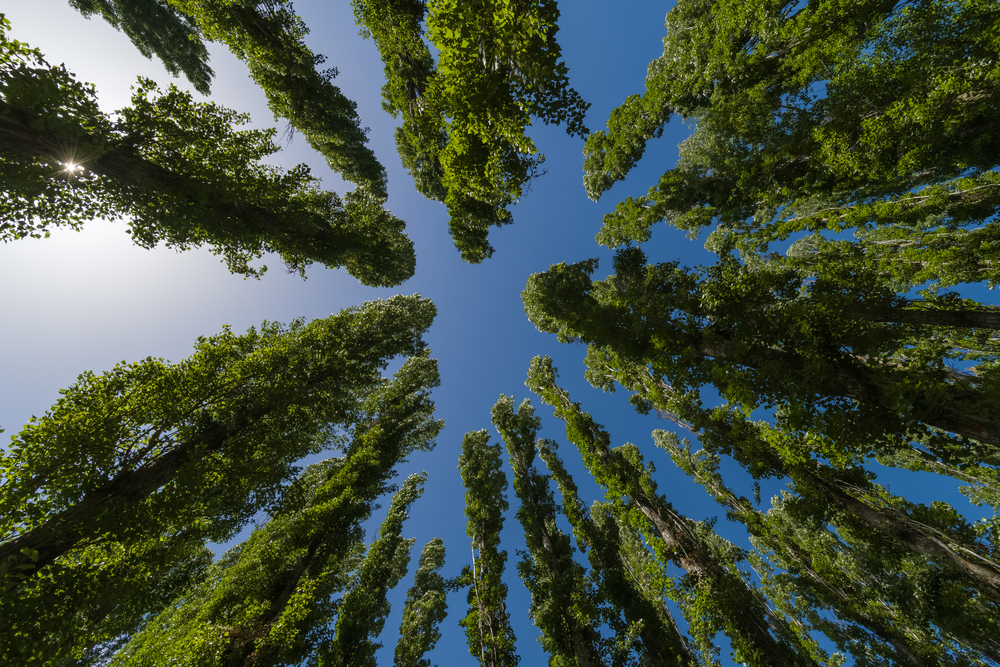
25 Mar The Importance of Poplars in Manitoban Propolis
Propolis ACF® was the result of years of research led by Dr. Zenon Sosnowski (MSc, PhD). He spent several decades researching bee propolis and its potential human benefits and developed the extraction process first patented in the 1970s.
The first positive effects from topical application of ointment containing Propolis ACF® were reported in clinical investigations conducted in the 1980s, and these healing effects were confirmed in more recent structured clinical trials.
Studies of crude propolis from Manitoban bee hives have indicated that bees collect exudate from around 230 different plant types before they mix and spread it around their hives. Research has also confirmed that the purified Propolis ACF®, also has unique and highly important constituents which set it apart from the propolis derived from other regions of the world.
In the Manitoba region of Canada, when bees make propolis they mix their saliva, wax produced by special glands on worker bees’ abdomens, and plant resins collected from poplar trees, Clusia minor/rosea flowers, and plants in the Asteraceae family. These are plant-derived substances which form the overwhelming majority of crude propolis are called phenolics. Phenolics include flavonoids, which have several subgroups. These include Flavones, flavonols, flavanones, (which are responsible for the red, orange and yellow colours in fruit and autumn leaves).
Pharmacologically, phenolics and flavonoids possess natural antiviral, antibacterial, anaesthetic, anti-inflammatory, and healing properties (due to the ability to increase cell metabolism and mitotic activity). The anti-inflammatory properties prevent the production of pro-inflammatory mediators.
A unique sub-group of substances found in Manitoban crude propolis are a class of secondary metabolites called dihydrochalcones. Dihydrochalcones are widespread but those found to be characteristic of the bud exudates of poplars and in particular the sub-group Tacamahaca or balsam poplars are of special interest to us and their presence in Propolis ACF®.
The poplar species
Populus (poplar) is a genus contained within the Salicaceae family (also known as the Willow family). According to the Encyclopaedia Britannica, there are 55 genera in the Salicaceae family and 1000 species of “deciduous or evergreen shrubs and trees” within that.
Poplars are the main temperate genus of the Salicaceae family and these are split into five subgenera:
- Leuce: e.g. aspens and white poplars
- Tacamahaca: e.g. balsam trees
- Aegirus: e.g. black poplars
- Leucoides: e.g. necklace poplars or bigleaf poplars
- Turanga: e.g. subtropical poplars
- Abaso: e.g. Mexican poplars
Within these five divisions there are at least 35 species of tree, as well as some natural hybrids.
Poplars are widely distributed throughout the world but largely found in northern temperate regions including North America, Eurasia, and northern Africa. There are even some species which live beyond the Arctic Circle.
The trees in this genus grow very quickly – from one to three metres every year – depending on geographical climate, weather and species. In comparison, many trees grow just inches annually.
Canadian poplars and propolis
10% of the world’s forests are located in Canada, with 11.6% of the country’s trees being poplars. According to the Poplar Council in Canada, there are 45,062,579 acres of natural (non-hybrid) species of the tree in this region.
Exudate and resin extracts from a variety of poplar species, such as quaking aspen (populus tremuloides), bigtooth aspen (populus grandidentata), balsam poplar (populus balsamifera) contribute to the make-up of Canadian propolis from the Manitoba region.
It is this crude propolis which is harvested by Manitoban apiarists and refined by our specialist laboratory in Winnipeg, Manitoba.
Other uses for poplars internationally
The wood that poplar trees produce is relatively soft and, for this reason, it is mainly used to make items such as cardboard boxes, crates, paper, and veneer for furniture.
However, these trees are also used to make sawn wood (from which other products can be made), in the carving of wooden shoes (sabots), in shipbuilding and for making matches.
Further to these many uses, poplars have been well-liked amongst landscape gardeners and city planners for centuries – the Latin name Populus is actually a reference to the fact that these types of trees were often planted near public meeting places by the Romans.
Research and development continues into how Propolis ACF® could possess a plethora of potential beneficial uses in the world of cosmetics and medicine.


No Comments